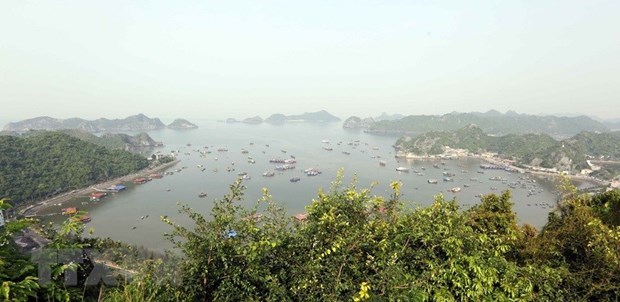 Environment
Environment


|
| Cát Bà archipelago in the northern city of Hải Phòng was officially recognised by the United Nations Educational, Scientific and Cultural Organisation (UNESCO) as a world biosphere reserve on December 19, 2004. — VNA/VNS Photo |
HÀ NỘI — As most of the protected areas and biosphere reserves in Việt Nam are located in areas with high poverty rates, achieving the goal of both conservation and economic development is difficult.
Participants at a workshop on the development and management of biosphere reserves in Việt Nam on Tuesday also pointed out other barriers, including the lack of a common framework to implement integrated solutions in sustainable development, ineffective organisation and coordination of stakeholder participation in the biosphere reserves.
Speaking at the workshop 20 years after Việt Nam joined the World Biosphere Reserve network, Võ Tuấn Nhân, Deputy Minister of Natural Resources and Environment, said he expected stakeholders to recognise and evaluate the results achieved after two decades of work, while also discussing solutions for the sustainable management and development of biosphere reserves.
In Việt Nam, the first recognised was the Cần Giờ Mangrove Biosphere Reserve in 2000. So far, a total of nine biosphere reserves have been recognised in Việt Nam, covering an area of over four million hectares, accounting for about 12.1% of the country's area, and home to about 1.78 million people.
The development and expansion of the country’s biosphere reserve system is a great effort on the part of Minister of Foreign Affairs, the People's Committees of provinces with Biosphere Reserves, the Việt Nam Human and Biosphere Program (MAB Việt Nam) plus other stakeholders.
Sitara Syed, UNDP Deputy Resident Representative in Việt Nam, said that it was essential to raise awareness about the crucial role of biosphere reserves in protecting the rich biodiversity of Việt Nam.
“We need stronger public partnerships and effective strategies for active local stakeholder engagement that will strengthen Việt Nam’s biosphere reserves for a better future for the country and achievement of the SDGs,” she said.
“Biosphere Reserve” is a title awarded by the United Nations Educational, Scientific, and Cultural Organization (UNESCO) to “coastal or terrestrial ecosystems that help promote solutions to harmonise protection and preserve biodiversity with sustainable use of that area.”
The goal of the biosphere reserves is to ensure harmony between humans and nature through the implementation of the three main functions of conservation, development, and support. Approaches to managing the biosphere reserves are open, interdisciplinary, and multi-disciplinary.
Worldwide, there are 714 biosphere reserves in 129 countries recognised by UNESCO. — VNS




